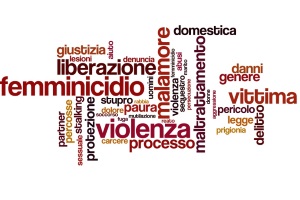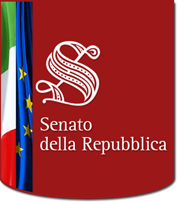IN EVIDENZA
-

Stalking, maltrattamenti domestici, stupri, mutilazioni genitali, femminicidio: dal primo Piano straordinario nazionale del 2015 ai tanti piani di intervento delle Regioni, negli ultimi anni gli strumenti a tutela delle donne si sono moltiplicati. L'attuazione di queste misure, però, è spesso rimessa a circolari che rendono difficile, per la vittima, conoscere gli strumenti a propria difesa (e richiederne l'applicazione). L'UVI fa il punto sulle risorse antiviolenza con la sua prima guida a misura del cittadino.

Stalking, domestic abuse, rape, genital mutilation, femicide: from the first Extraordinary National Plan of 2015 to the many Regional measures, over the past years the instruments aimed at protecting women have multiplied. The enforcement of such measures, however, is often left to circular letters that make it difficult for the victim to get to know the available tools for her defence (and to request their implementation). The Impact Assessment Office zeros-in on anti-violence resources by drafting the first pertinent guide for citizens.
-

Da anni l'Europa invita il nostro paese a ridurre "l'uso e la generosità delle esenzioni e dei regimi preferenziali" e anche secondo il DEF le cosiddette tax expenditures vanno sfoltite: nel 2017 sono state censite 636 misure diverse che valgono 75,2 miliardi di minori entrate (stimate) per lo Stato. Mancano però molte informazioni fondamentali: solo di 130 agevolazioni si conoscono impatto, fruitori e importo pro capite. E di queste, oltre la metà avvantaggia meno di 30 mila contribuenti.

For years the EU has been asking our country to reduce "the use and generosity of exemptions and of preferential tax treatments", and even according to the DEF (economic and financial document) tax expenditures should be cut: in 2017, 636 different measures were identified, subtracting an estimated 75.2 billion Euros from State revenues. Yet plenty of crucial information is lacking: we know the impact, recipients and per capita benefit for only 130 tax expenditure measures, and more than half of these measures benefit less than 30,000 taxpayers.
-

Con 352 miliardi di euro da distribuire nel settennio 2014-2020 per stimolare la crescita, di cui 46,5 all'Italia, la politica di coesione è il vero pilastro dell'azione europea. Ma decenni di interventi non sono bastati a cancellare le disparità economiche e sociali all'interno dell'Unione. E l'Italia si ritrova oggi con un primato non invidiabile: ha il valore più basso di sviluppo sociale nell'UE-15 e il suo Mezzogiorno è la più grande area depressa del continente. Che cosa non ha funzionato?

€352bn earmarked for the 2014-2020 period in order to stimulate growth make cohesion policy the veritable pillar of European integration. However, decades of growth policies were not able to smooth out economic and social imbalances: Italy now unenviably tops the EU-15 chart of countries with the lowest social development index and Southern Italy is the largest depressed region in Europe. What went wrong?
-

Meno di un quarto dei bambini tra 0 e 2 anni trova posto nei servizi pubblici per la prima infanzia. Se in Valle d'Aosta vanno al nido 4 piccolissimi su 10, in Campania ce la fanno solo 6 su 100. Per aumentare l'offerta, soprattutto al Sud, negli ultimi 10 anni lo Stato ha speso circa 1.150 milioni di euro. Ora la riforma della "buona scuola" mette sul piatto oltre 200 milioni l'anno a partire dal 2017. Con quali prospettive di raggiungere gli obiettivi Ue?

Fewer than a quarter of Italian babies between the ages of zero and two have a place in a public facility for infants. Coverage is uneven across the country: in Valle d'Aosta, four tots out of ten go to nursery; in the Campania region, the number is just 6 out of 100. To increase the number of available places, over the last decade the Italian state has spent some €1.15 billion. The "Buona Scuola" Reform now adds over €200 million per year to the pot, starting from 2017. What's the outlook?
-

Nel 2000 l'Italia ha scelto di passare a un modello militare composto di soli professionisti: meno uomini e donne (da 265 a 190 mila) ma più impegnati all'estero nelle missioni internazionali. La crisi esplosa nel 2008 e i nuovi costi del personale hanno però inciso pesantemente sulla riforma. E anche l'impegno oltre confine è stato ridotto: per il 2018 sono previste 35 operazioni in tre continenti, con un impiego medio di 6.400 militari. Erano 12mila nel 2003.

In 2000 Italy abandoned compulsory conscription and migrated, after 144 years, to a leaner military model (from 265.000 men and women to 190,000) entirely composed of professionals. International peace-keeping and peace-enforcing missions became the core task of Italian armed forces, but the crisis that exploded in 2008 has deeply affected the fulfillment of the reform. And between reductions in personnel (expected to number no more than 150,000 by 2024), the ageing of the volunteers in service and severe cuts in spending and investment, even the commitment of troops abroad no longer reached the levels of the early 2000s.
-

Nella I legislatura della Repubblica sono entrate in Parlamento 4 senatrici e 49 deputate: il 5%. Nel 2018, le parlamentari hanno raggiunto il 35% e il Senato ha eletto il suo primo presidente donna. Ma su oltre 1500 incarichi di ministro, solo 83 sono andati finora alle donne (5 nell'ultimo governo): 41 senza portafoglio. Nessuna è diventata presidente del Consiglio. E anche a livello locale il cammino verso la parità è ancora lungo: su 20 regioni ci sono due governatrici e ogni 100 sindaci 87 sono uomini.

The first general election in Republican Italy was held on 18 April 1948. In Parliament there were only 49 women, equal to 5%. Almost 30 years and seven parliaments went by before Italy, in March 2018, elected more than 300 women. The 18th Parliament is experiencing another record: the Senate elected its first female president. Italy has yet to have a woman Prime Minister, and only 83 women were appointed ministers thus far, out of 1,500 appointments. Only two of Italy's regions have a female governor. Just 13 out of a 100 mayors are women.
-

Tra 2014 e 2020 l'Unione europea metterà a disposizione dell'Italia, attraverso fondi strutturali e di investimento, oltre 77 miliardi di euro: 46,5 per le politiche di coesione e 31 per la politica agricola comune. Ma Uvi e Guardia di Finanza dimostrano come, in 6 casi su 10, i contributi finiscono in mano a furbetti, truffatori e criminalità organizzata. Il record va al Mezzogiorno: 85% di frodi sui fondi strutturali. Al Centro va invece il record degli illeciti per agricoltura e pesca.

Between 2014 and 2020, the European Union is setting aside more than 77 billion euros for Italy in structural and investment funds: 46.5 bn in cohesion policies, and 31 bn for the common agricultural policy. However, the UVI and Italy's Financial Police reveal that in 6 out of 10 cases, these funds end up in the hands of scoundrels, swindlers and organized crime. Southern Italy is the biggest offender, accounting for 85% of structural fund fraud. Central Italy is responsible for the lion's share of offences involving agriculture and fishing.







